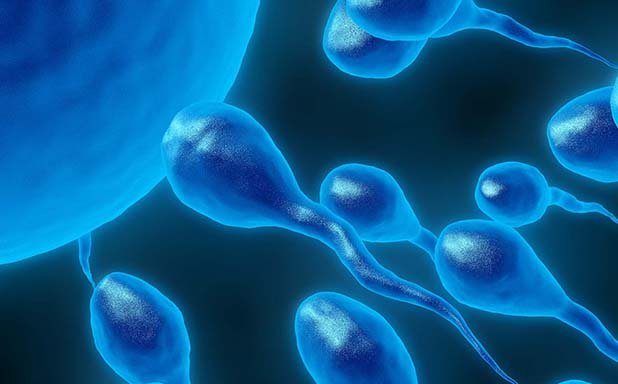New Research Uncovers Proteins That Drive Sperm Movement
Only one sperm is needed for pregnancy, even though tens to hundreds of millions are released during ejaculation, all competing to reach the egg, which allows entry to only one. However, many couples face fertility problems: sperm count, sperm motility, and overall health, as well as external factors like stress, smoking, and alcohol, can all affect the chances of conception. A study has shown that eggs and follicular fluid can subtly “choose” which sperm will fertilize the egg through chemical signals. However, sperm motility can be hindered if certain proteins are missing, making it difficult for sperm to reach the egg, as shown by a new study.
A study,” Proximity labeling of axonemal protein CFAP91 identifies EFCAB5 that regulates sperm motility,” shows that certain proteins play a role in the development and function of sperm.
The study from Osaka University found that the protein CFAP91 helps shape the complex structures within the sperm flagellum, known as radial spokes, which are essential for the precise and coordinated movement of sperm. Sperm whose flagella do not function properly cannot move effectively, significantly reducing their chances of fertilizing an egg.
The researchers created mice that lacked the protein CFAP91 and examined their sperm’s shape and motility. They then reintroduced CFAP91 into the same mice to determine which proteins it interacts with. Using a method called proximity labeling, they were able to identify additional proteins associated with fully developed sperm. When CFAP91 was restored in the mice, the researchers observed interactions with known radial spoke proteins. Moreover, proximity labeling revealed that EFCAB5 is a CFAP91-associated protein critical for regulating sperm movement.
These findings reveal just how sophisticated the structure of sperm is and how crucial these small proteins are to male fertility. Understanding their roles not only deepens our knowledge of human reproduction but may also help develop new methods for diagnosing and treating infertility.
Infertility problems were previously reported in men lacking functional CFAP91. “A previous study has identified two biallelic variants of Cilia and Flagella Associated Protein91 (CFAP91) in male infertile patients, which led to severe astheno-teratozoospermia, a condition that is accompanied by diminished sperm motility and abnormal sperm morphology.…” according to the study.
Given these important findings, a question arises: Is the size of the sperm itself relevant, or is something else at play, like genetics?
Is the size of the spermatozoa important in this case? When discussing fertility, people usually consider factors such as lifestyle, genetics, and nutrition. Therefore, I would like to ask whether genetics might also play a role in relation to these proteins. What are your future research plans in this area?
“The size of the sperm itself is not the main factor here. What is crucial is the proper formation and function of the sperm’s flagellum—the long tail that drives motility. Our study shows that defects in specific proteins impair flagellar structure and motion, which directly reduces fertility.
Genetics is certainly relevant. Mutations or loss of these proteins can impair spermatogenesis and cause infertility. Our findings provide a foundation for investigating whether similar genetic variations contribute to infertility in humans. Future research will look more closely at these genetic links and how they may be used in clinical contexts,” said Dr. Haruhiko Miyata, senior author and researcher at the Research Institute for Microbial Diseases, Osaka University, Suita, Osaka, Japan
This is especially important given that millions of people worldwide struggle with infertility—a condition that not only affects family planning but also carries a significant emotional and mental health burden. The question now is. How can this research help?
And as Dr Miyata concluded: “By identifying proteins such as CFAP91 and EFCAB5 that are essential for sperm motility, we gain a clearer picture of how male infertility can arise at the molecular level. This knowledge could help in developing new diagnostic approaches or therapeutic targets for certain cases of male infertility.”
Image: Sperm health/Brunel.ac.uk


